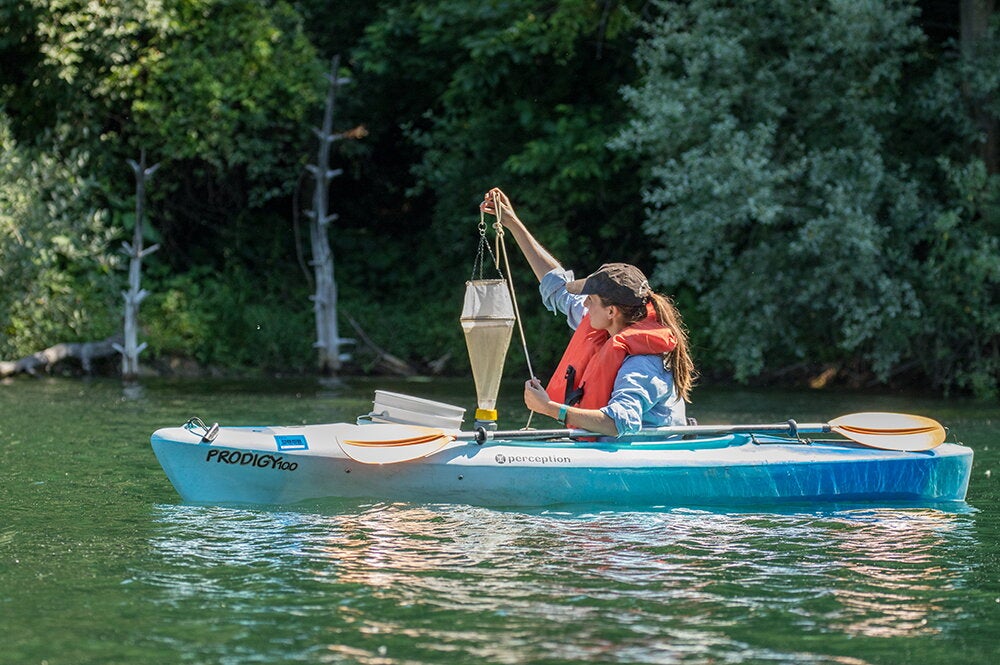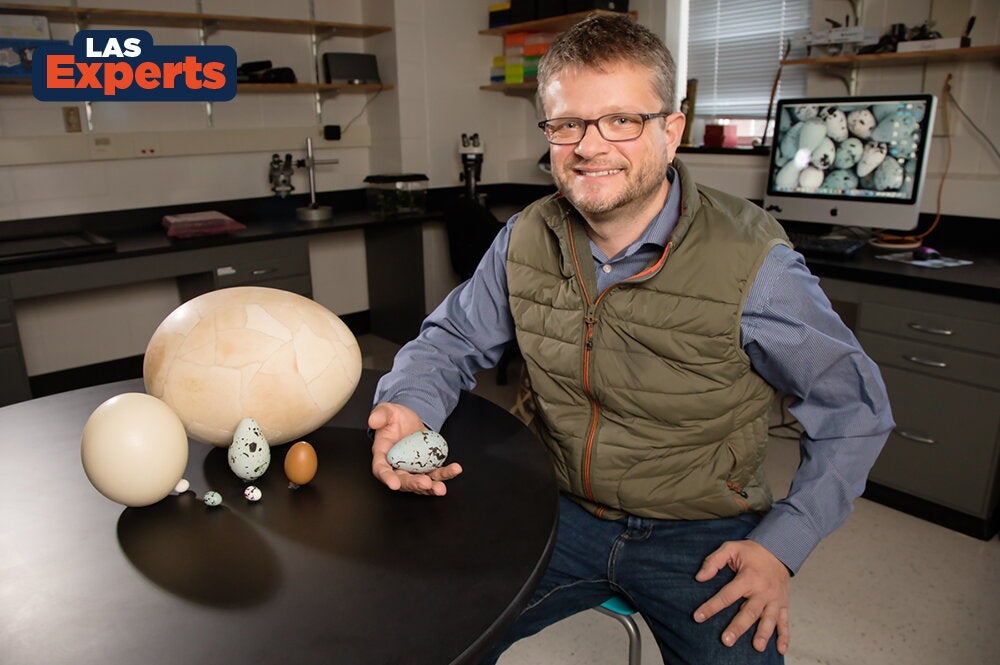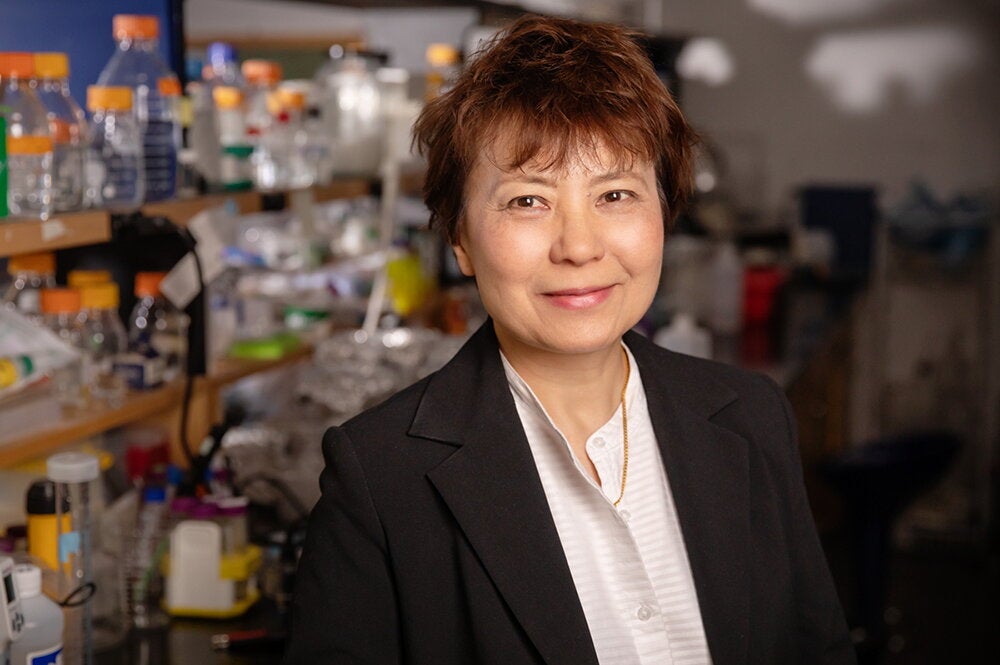

For some plants, it pays to be devoured.
When certain herbs are eaten down to the ground, they re-grow even larger, producing significantly more biomass, flowers, fruits, and seeds than plants of the same species that were not eaten. Now, LAS researchers may know the reason why, for they discovered what might be one mechanism behind these comeback plants. Remarkably, these plants increase their number of chromosomes after being damaged.
“Finding out that an organism can change its chromosome number under environmental stress was pretty surprising,” says Ken Paige, head of the University of Illinois Department of Animal Biology. “This had not been shown in any form by any other living organism.”
Paige and LAS graduate student Dan Scholes have been studying several types of herbaceous plants, including Arabidopsis, commonly known as mouse-ear cress. Mouse-ear cress plants normally have five pairs of unique chromosomes for a total of 10, says Scholes. But after simulating the kind of damage done by small mammals, they discovered that the number of chromosomes in an individual plant can skyrocket from 10 to up to 80.
The mouse-ear cress plant does not create any new chromosomes, Scholes points out, but it creates additional copies of the same five unique chromosomes. As a result, individual plant cells increase in size because they must be larger to support the additional DNA. Such changes could be a factor behind the incredible rate of re-growth, allowing greater nutrient and water transport, protein synthesis, and light absorption.
“It’s phenomenal,” Paige says. “When mouse-ear cress is eaten to the ground, it re-grows exceedingly fast during the same season and catches up with undamaged plants in flower and fruit production. The damaged plants also wind up with higher seed set, and the biomass is greater.”
The idea that some plants can “overcompensate” or increase seed and biomass production after being eaten has been controversial. “It goes against the grain,” Paige says. He has talked about this to agriculturalists over the years, and by and large he says they have the same response: “Herbivores damage plants. Period.”
Some skeptics also argue that overcompensation occurs in only a few select plant species—as exceptions to the rule. But the U of I team has found that overcompensation is a common phenomenon in a large number of plants, and the majority of flowering plants can change their chromosome number as well. However, never before has the change in chromosome number been seen to increase re-growth rates after damage. Scholes and Paige have pinpointed two genes behind the increase in chromosome numbers, so one possible outcome of the Illinois research is that other plants might be genetically engineered to have this capability.
According to Paige, the impressive rate of re-growth after being eaten is likely an adaptive response, more commonly found in areas where these plants are regularly eaten by animals. For instance, when looking at the earliest example of overcompensation, scarlet gilia, you do not see the same response to damage in Colorado; that’s because only about 20 percent of those plants are regularly eaten by animals.
But in northern Arizona, it’s a different story—80 percent of the scarlet gilia are eaten each spring by mule deer and elk. At these high levels of damage, the plants have adapted; they increase biomass and seed set in response to the damage, and they too increase chromosome number during re-growth.
“We’re not saying that the increase in chromosome numbers is the only mechanism behind this adaptive strategy,” Scholes says. “But it’s fascinating that a plant can get eaten, and it improves its performance. It’s a paradox.”


